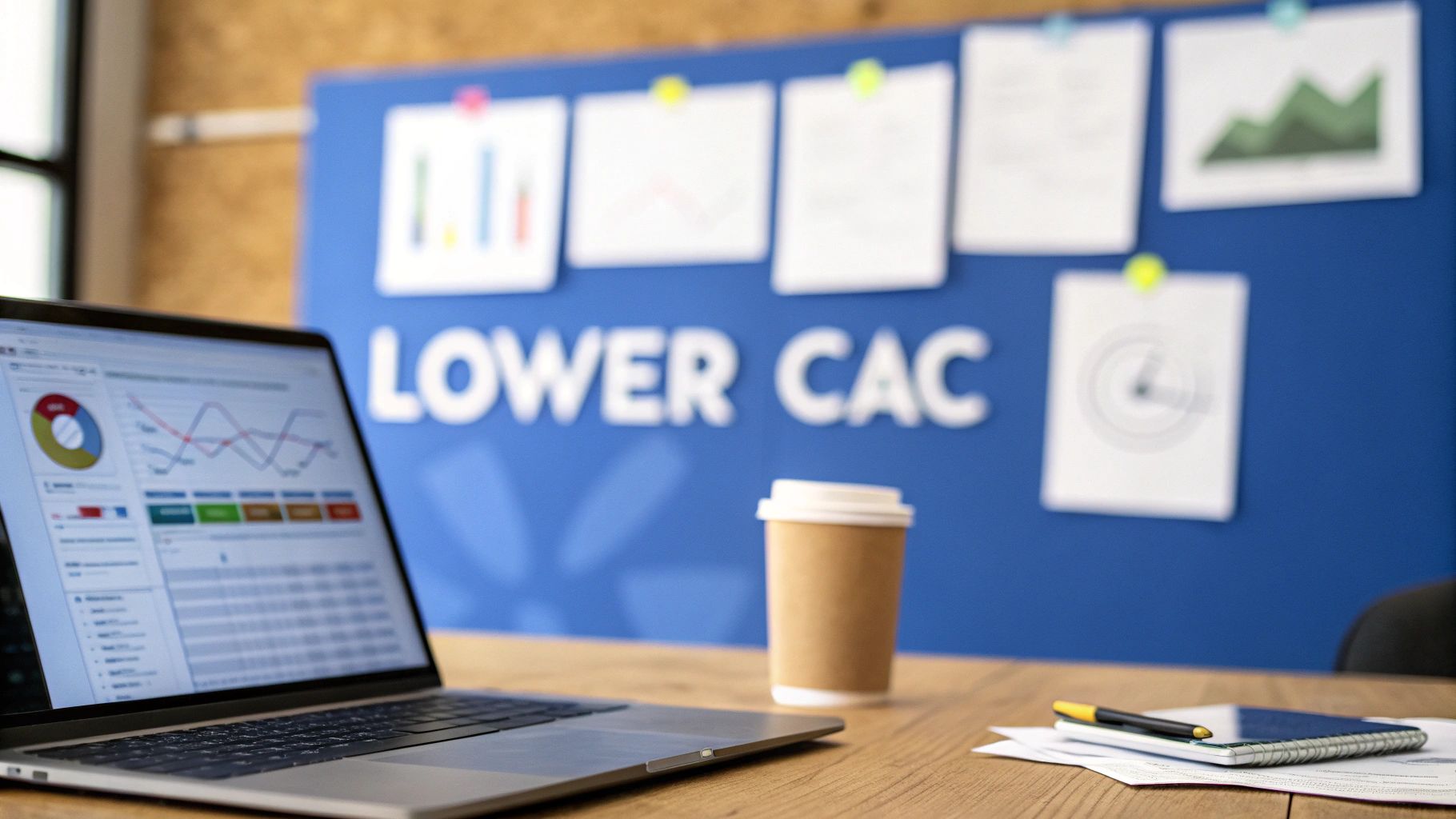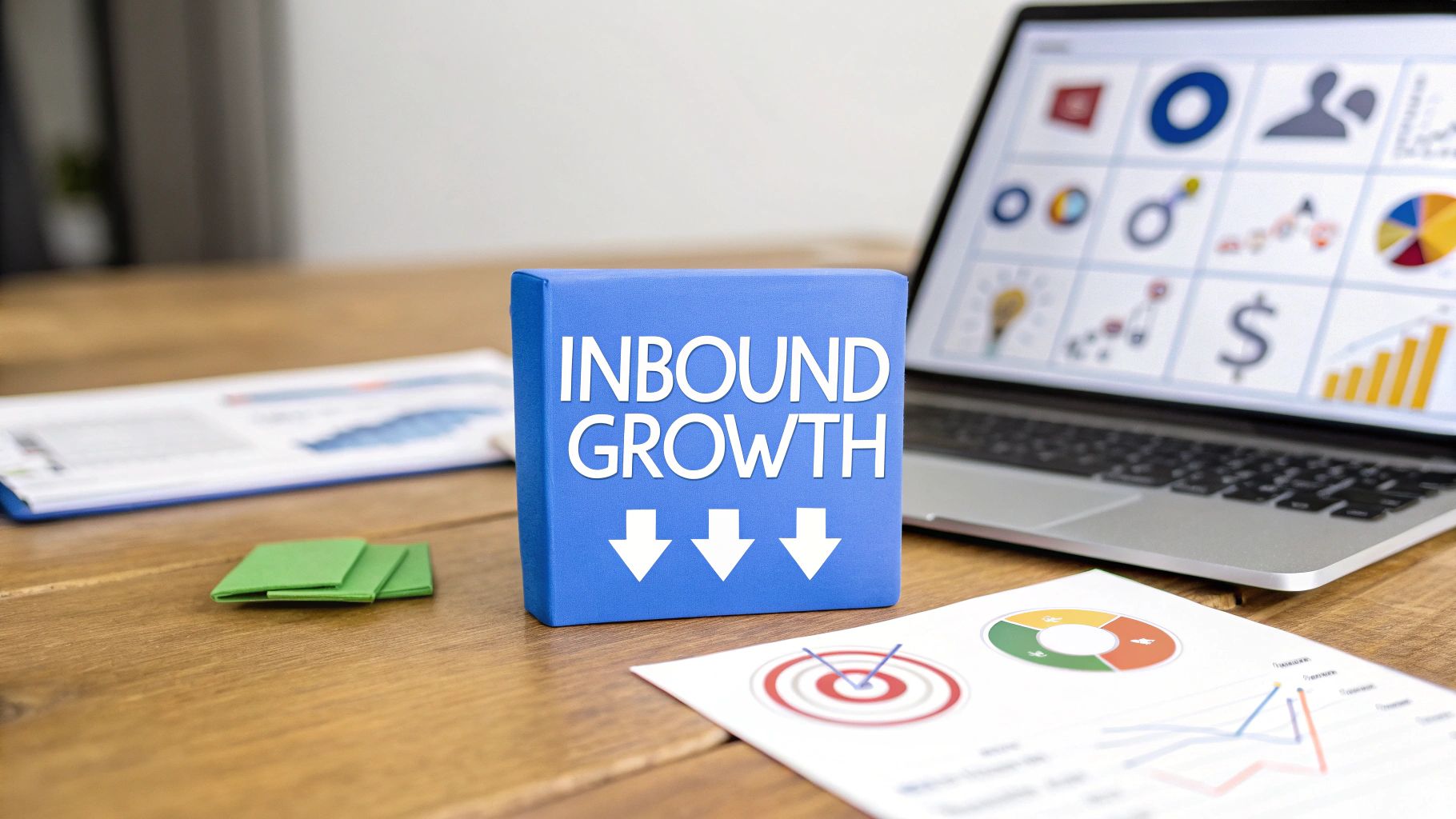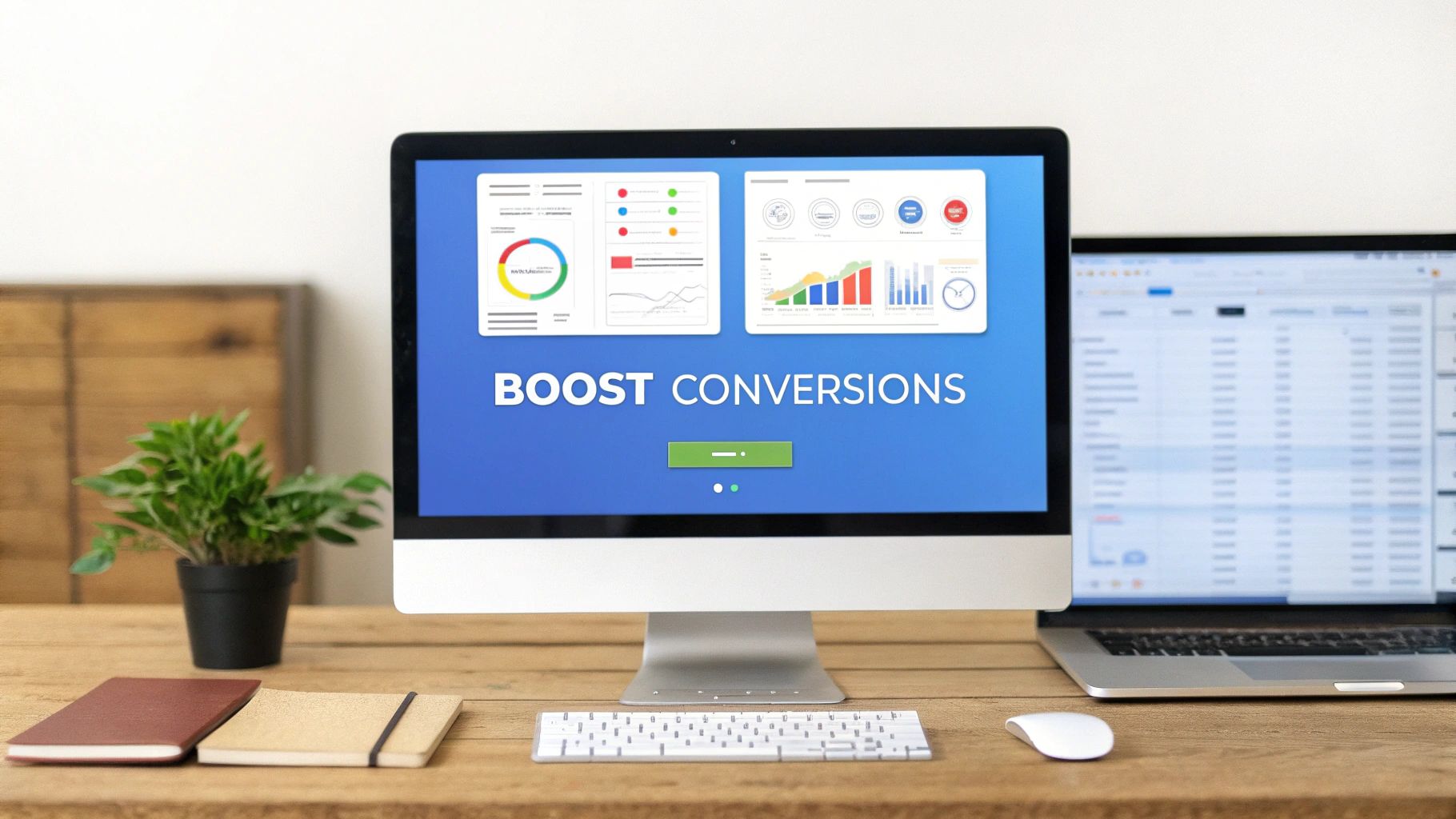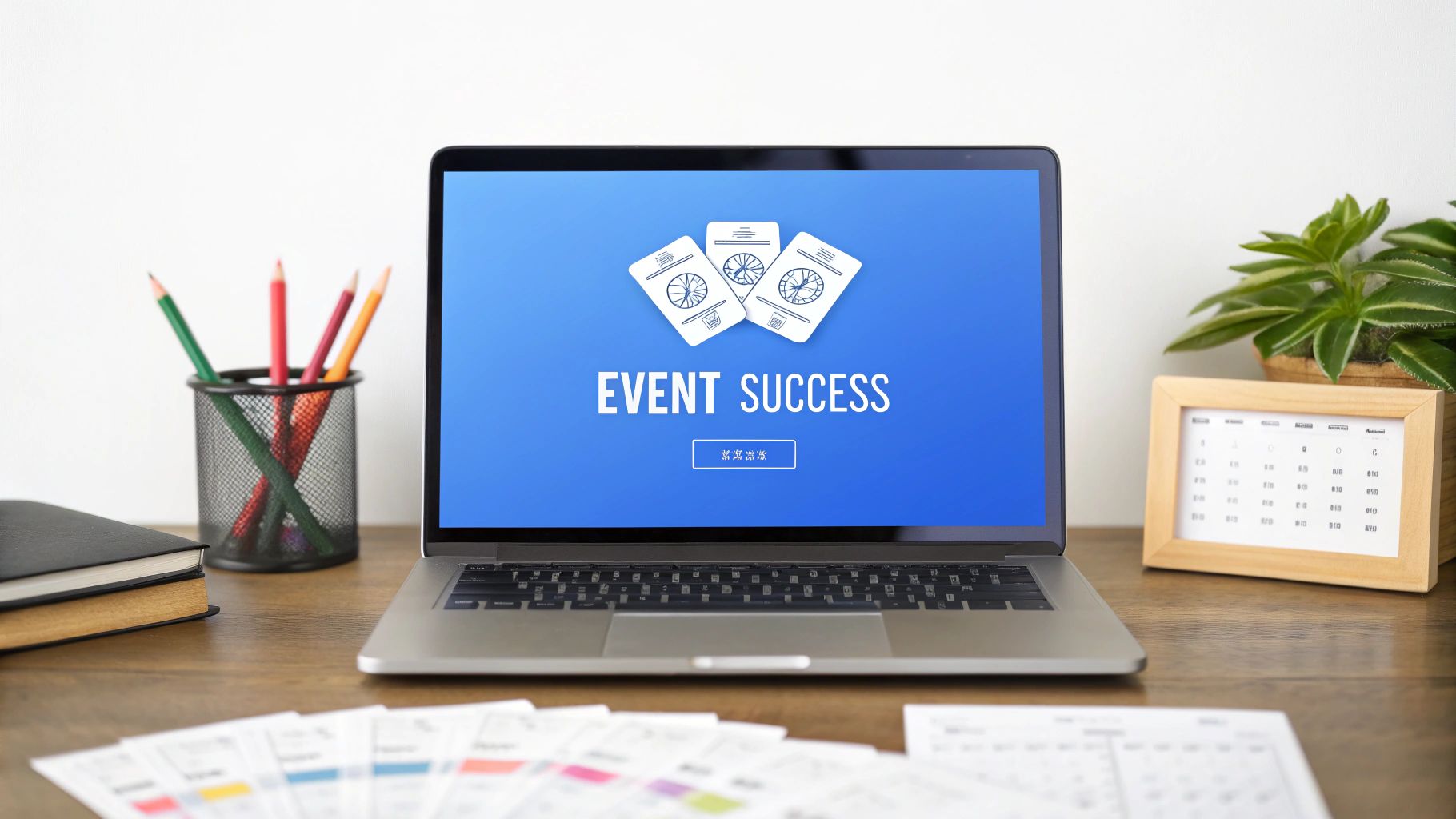Summary
Feeling the squeeze from rising ad costs? You're not alone. The key to sustainable growth isn't just spending more—it's spending smarter. Reducing your customer acquisition cost (CAC) is about optimizing your entire marketing funnel, from the first click to fostering long-term loyalty. This guide will show you how to attract high-value customers who stick around, turning your marketing budget into a powerful growth engine.
Ready to make every dollar count?
Why Is Your Customer Acquisition Cost Soaring?
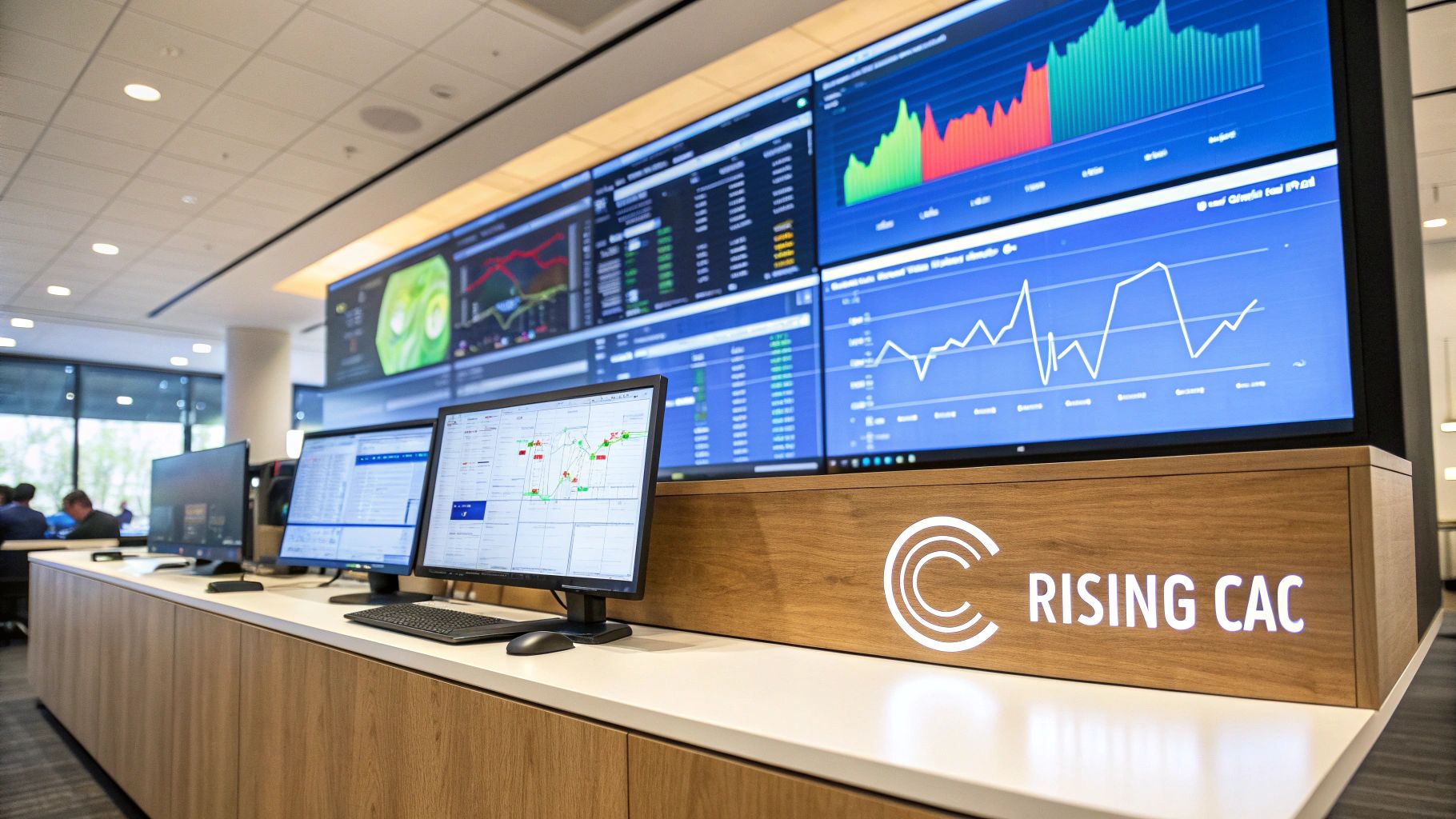
If your marketing budget feels like it's vanishing faster than ever, you're not imagining things. Acquiring a new customer is becoming more expensive across nearly every industry. This isn't just a hunch; the data confirms it.
Recent reports indicate that customer acquisition costs have surged by an average of 60% in the last five years. While some niches experienced smaller increases, the most competitive markets have felt the full force of this trend. Making every marketing dollar work harder is no longer optional—it's essential.
So, what's behind this climb? A perfect storm of factors. Digital ad platforms are more saturated, competition is fiercer, and consumer attention is fragmented. Simply throwing more money at the same old channels is a recipe for diminishing returns.
There has to be a better way, right?
Shifting from Spending More to Investing Smarter
The solution lies in a strategic mindset shift. Instead of fixating on top-of-funnel metrics, the real goal is to enhance the efficiency of your entire customer journey. We need to make every dollar work harder by attracting better-fit leads and converting them more effectively.
But before you can optimize, you need a crystal-clear understanding of where your money is going. Getting a firm grip on your numbers is the non-negotiable first step. If you're not 100% confident in your metrics, start by reviewing our guide on how to calculate cost per acquisition to establish your baseline.
This guide is about moving beyond guesswork. We'll walk through actionable strategies to help you lower acquisition costs for good.
Here’s a quick overview of the key areas we'll tackle to help you regain control of your marketing spend.
Key Focus Areas for Reducing Your CAC
Each of these areas plays a vital role in building a more efficient and profitable growth model.
The most powerful way to lower your acquisition cost is to dramatically increase the value of every customer you bring in. A happy, loyal customer costs next to nothing to "re-acquire" and often becomes your best salesperson through word-of-mouth.
This isn't about making painful cuts. It's about making smart, data-backed decisions that fuel profitable, long-term growth. Ready to take back control of your marketing spend? Let's dive in.
Uncover Hidden Money Drains in Your Acquisition Channels
You can't fix a problem you can't see. For many businesses, the marketing budget is a black box—money goes in, but it's unclear what truly drives growth. To slash your customer acquisition costs, the first step is a ruthless audit of every single channel. You must uncover what's working and what's just burning cash.
This means looking beyond vanity metrics like website traffic or social media likes. Sure, a channel might send thousands of visitors your way, but if none of them convert, it's a costly distraction, not a growth engine. The goal here is to calculate a precise Customer Acquisition Cost (CAC) for each channel, from your Google Ads campaigns to your email newsletter.
So, how do you achieve that level of clarity? It all starts with meticulous tracking.
From Murky Data to Crystal-Clear Insights
To get an accurate picture, you must trace every new customer back to their original source. This is where tools like UTM parameters become invaluable. By adding these simple tracking codes to your URLs, you can see exactly which campaigns, ads, or posts are bringing in paying customers.
Without them, your data is a blurry mess. You might think your latest influencer collaboration was a massive success because traffic spiked, but UTMs could reveal that an old, SEO-driven blog post quietly generated twice as many sales for a fraction of the cost.
This simple process—track, calculate, and reallocate—is the foundation of smart, sustainable growth.
This infographic breaks down the core workflow for identifying your winning channels and those that are weighing you down.
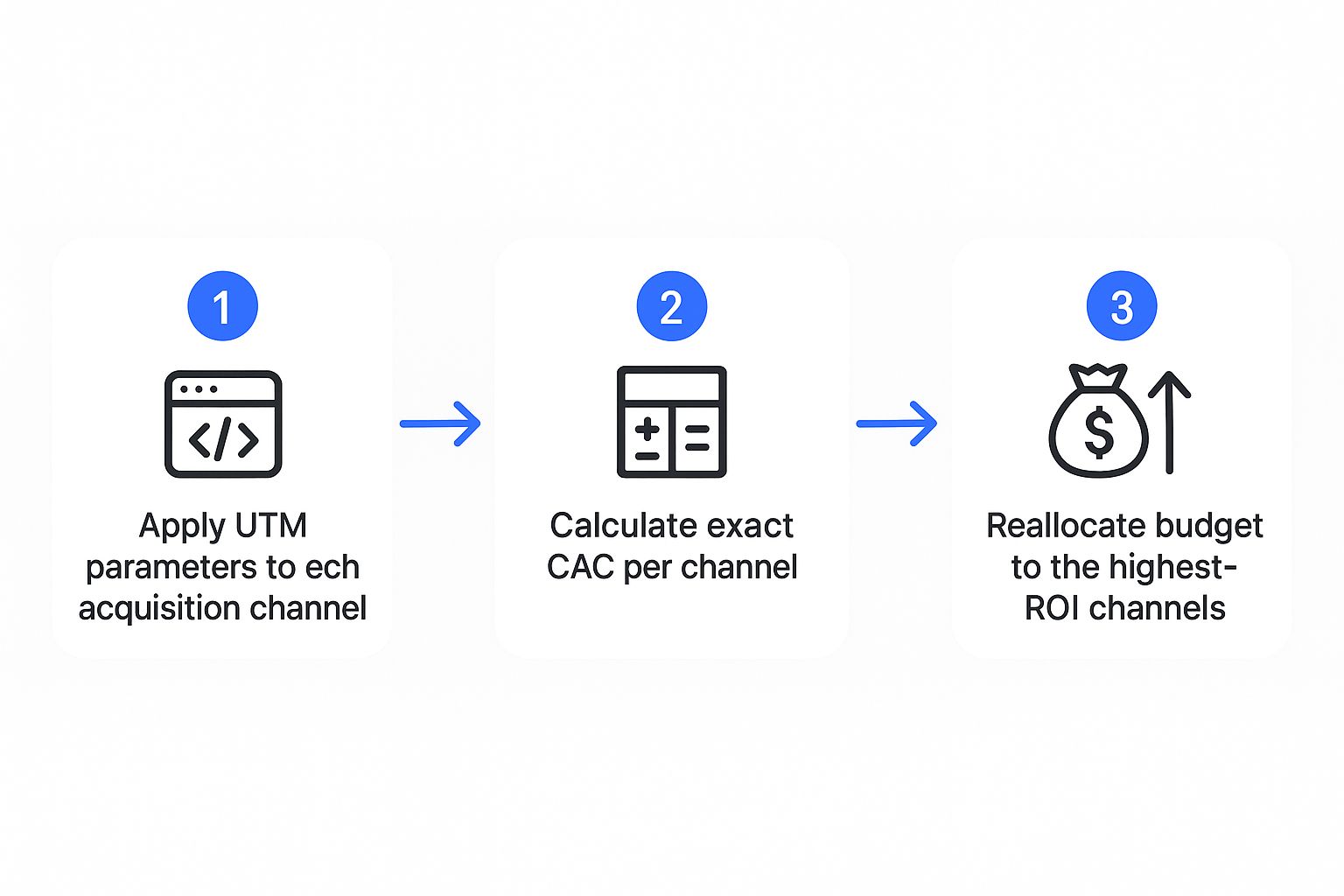
As the visual shows, systematic tracking leads directly to smarter budget decisions and, ultimately, a much lower CAC.
A Real-World Scenario: Uncovering Hidden Waste
Let’s look at a real-world example. An e-commerce brand selling handcrafted leather goods was pouring a significant portion of its ad budget into Instagram, its highest-traffic social channel. On the surface, things looked great—likes, comments, and shares were through the roof.
But a deep-dive audit revealed a shocking truth. After calculating the CAC for each channel, they discovered that the Instagram CAC was a staggering $150, while their average order value was only $90. They were actively losing $60 on every customer from the platform.
Meanwhile, their much smaller Pinterest channel, which they'd almost completely ignored, had a CAC of just $25. Though it drove less traffic, users from Pinterest were high-intent buyers ready to make a purchase.
By reallocating 70% of their Instagram budget to Pinterest, the brand slashed their overall CAC by nearly 40% in a single quarter. This is the power of a channel audit—it replaces gut feelings with hard, data-driven facts.
It's About Lead Quality, Not Just Quantity
A successful audit goes one step further: it evaluates the quality of the leads each channel delivers. Are the customers from your paid search campaigns making one-time purchases, or are they joining your loyalty program and becoming repeat buyers?
What are the critical questions you should be asking for each channel?
- What's the conversion rate? How many visitors from this channel actually follow through and make a purchase?
- What's the average order value (AOV)? Do customers from one channel consistently spend more than others?
- What's the Customer Lifetime Value (CLV)? Are you bringing in customers who will stick around and provide long-term value?
Answering these questions helps you pinpoint the channels that bring in your best customers, not just the most. This insight is crucial for learning how to reduce customer acquisition costs for the long haul.
By focusing your budget on the channels that deliver high-quality, profitable customers, you build a far more efficient and resilient growth machine. After all, your goal isn't just to acquire customers; it's to acquire the right ones.
How to Optimize Your Marketing Funnel for Maximum Efficiency
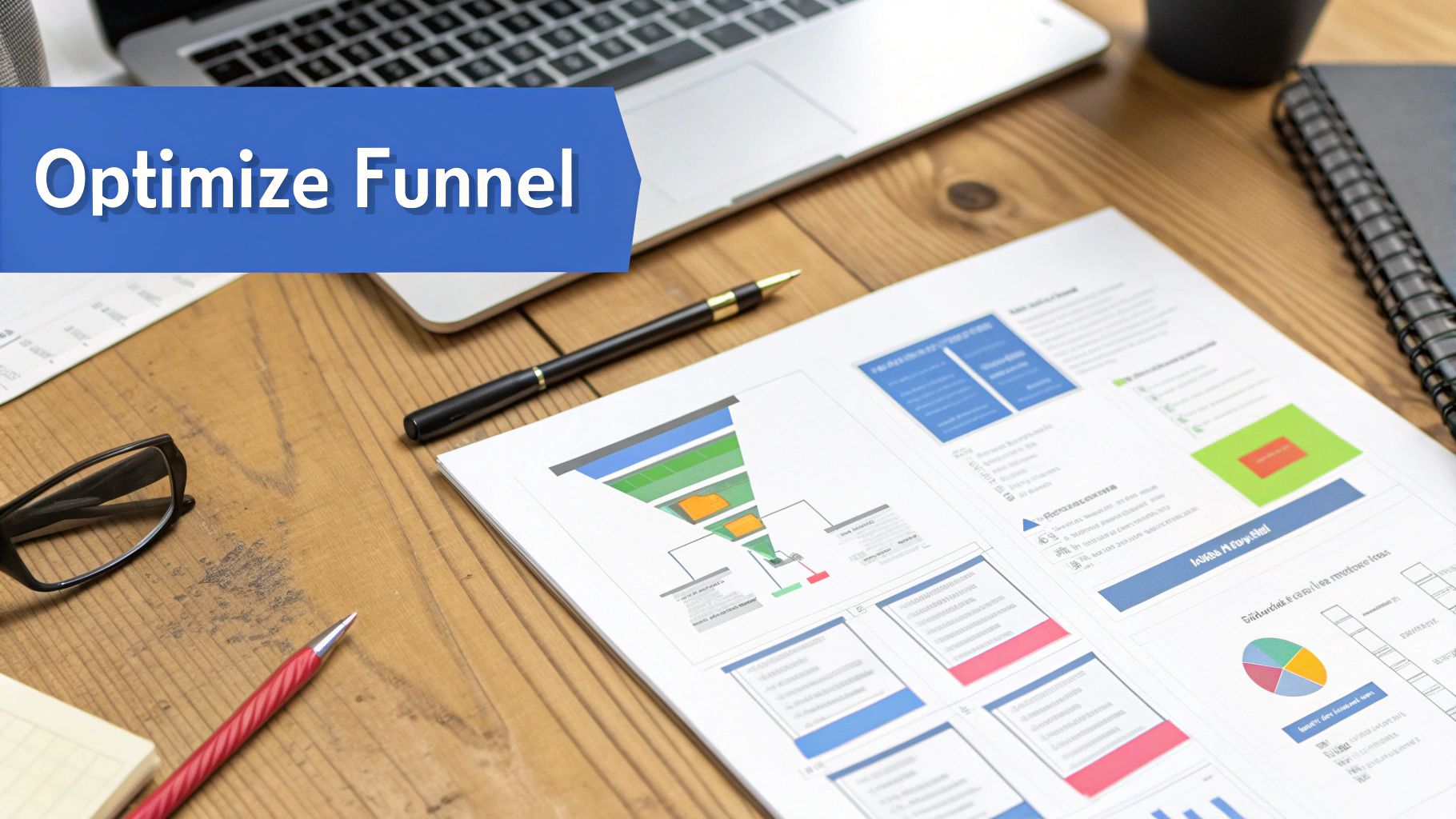
Once you’ve identified your most profitable acquisition channels, the next battleground is your marketing funnel. A leaky funnel silently inflates your CAC by letting high-potential leads slip through the cracks.
Think of it this way: you can either keep spending more to pour water into a leaky bucket, or you can just plug the holes. Funnel optimization is about plugging those holes—from the initial ad click to the final "thank you" page.
Let's be real, the modern customer journey is complex. People jump from social media to review sites and back to your website before considering a purchase. Your first job is to map this journey and identify the biggest drop-off points. Is a specific landing page causing friction? Is your checkout process overly complicated? Finding these friction points is everything.
Strengthening Your Landing Page Experience
Your landing page is often the first real interaction a potential customer has with your brand after clicking an ad. If it doesn't deliver on the ad's promise, they're gone in seconds. And you just paid for that click.
That first impression is make-or-break. Slow load times are a classic conversion killer; even a one-second delay can cause your bounce rate to skyrocket. Another common mistake is a mismatch between your ad copy and landing page content. If your ad promotes a 50% discount but the landing page barely mentions it, you create confusion and erode trust.
The key is continuous improvement. One of the fastest ways to slash your CAC is to ensure the traffic you already have converts effectively. You can learn how to improve ecommerce conversion rates by focusing on small but impactful changes. Simple A/B tests on headlines, calls-to-action (CTAs), and images can lead to significant wins.
For a deeper dive, explore these conversion rate optimization best practices to systematically improve your pages.
Smoothing Out the Path to Purchase
So, you've guided someone from an ad to a landing page, and they've even added a product to their cart. You're almost there, but this is where many businesses fumble. The checkout process can be a minefield of friction, and every unnecessary step is another reason for cart abandonment.
Is your mobile checkout experience clunky? Do you force people to create an account before they can buy? These are rookie mistakes that cost you sales.
A complicated checkout is like having a salesperson who actively tries to talk customers out of buying. Simplify the process, and you'll see an immediate impact on your bottom line.
Here are a few easy fixes to reduce checkout friction:
- Offer Guest Checkout: Don't force sign-ups. Let people buy quickly.
- Simplify Your Forms: Only ask for essential information. Every extra field increases the chance they'll quit.
- Provide Multiple Payment Options: Include options like PayPal, Apple Pay, or Google Pay to make it easier for customers to say "yes."
- Be Transparent About Costs: Show all shipping costs, taxes, and fees upfront to avoid last-minute sticker shock.
By making the path to purchase as smooth as possible, you convert more of the traffic you’ve already paid for. It's one of the most powerful ways to lower your CAC.
Winning Back Lost Opportunities with Retargeting
Not every visitor will convert on their first visit. That's normal. But that doesn't mean the opportunity is lost. These visitors have already shown interest, making them a valuable audience to re-engage.
This is where smart retargeting comes in. Instead of generic ads, you can serve highly relevant offers based on their on-site behavior. For example, if someone viewed a specific product, show them an ad featuring that exact item.
By making small, continuous improvements at every stage of the funnel—from landing page to checkout to re-engagement—you create a powerful compounding effect. Each fix builds on the last, systematically boosting your conversion rate and dramatically lowering your customer acquisition cost.
How to Use Personalization to Cut Through the Noise
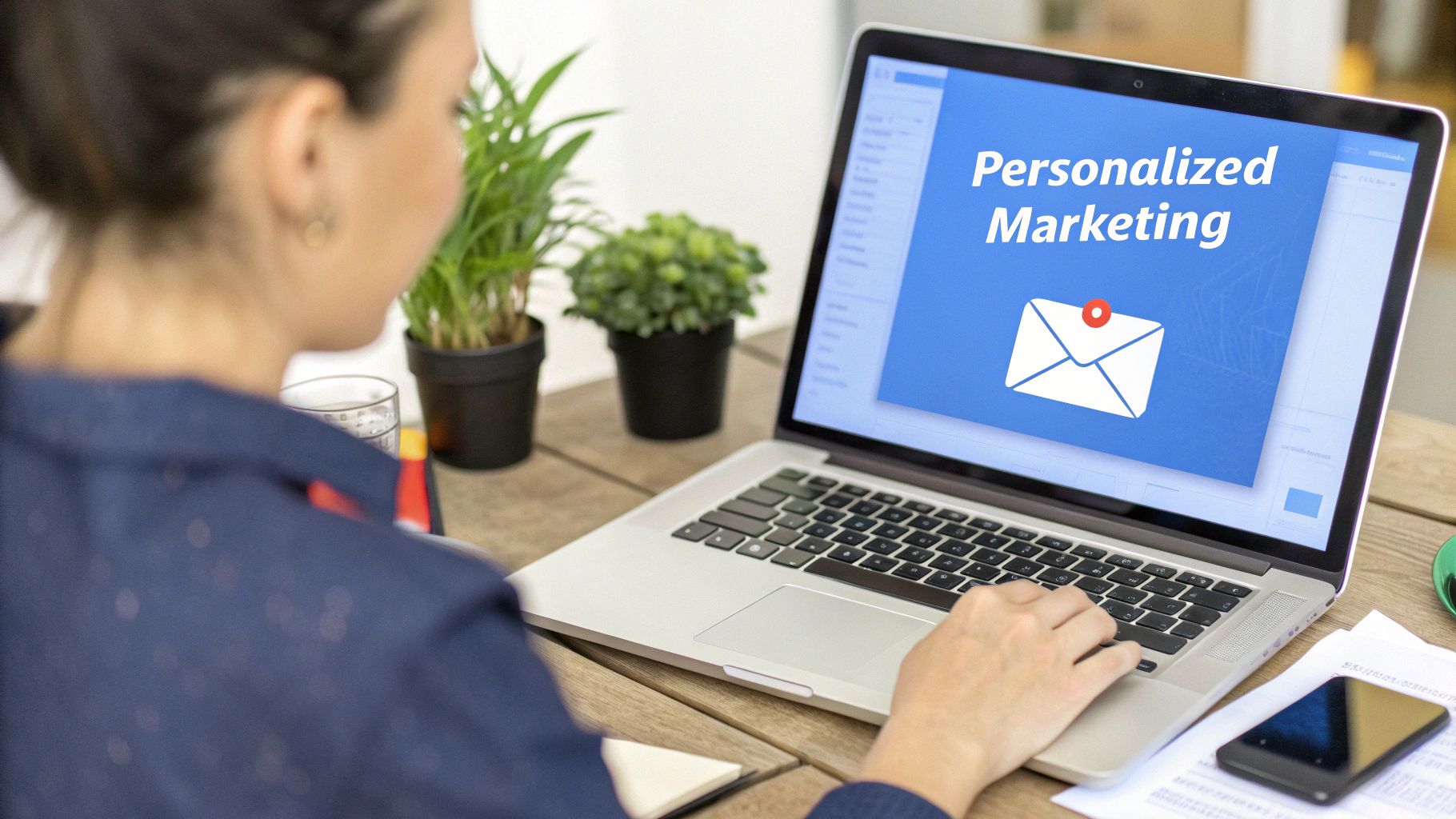
Let’s be honest: generic marketing is an expensive gamble. You're shouting into a crowded room, hoping the right person hears you. In today's market, that’s a fast track to burning through your budget with little to show for it.
What’s the solution? Personalization. It’s all about making every interaction feel like a one-on-one conversation.
This goes beyond just using a {{first_name}} tag in an email. True personalization means using customer data to deliver messages so relevant they feel uniquely crafted for the recipient. When a potential customer feels understood, they don't just listen—they convert.
The result is a marketing budget that works smarter, not harder. You can stop wasting money on broad campaigns that miss the mark and start building genuine connections that drive growth.
Moving Beyond Basic Audience Segmentation
The first step is to segment your audience into meaningful groups. The real magic happens when you go beyond simple demographics like age and location. The goal is to group people based on their actions, their interests, and where they are in their journey with your brand.
This is known as behavioral segmentation, and it allows you to tailor your messaging with surgical precision. A first-time visitor needs a completely different welcome than a loyal customer who has purchased from you five times.
Here are a few powerful ways to segment your audience:
- Purchase History: Group customers by what they've bought, how often they buy, or their average order value.
- Website Behavior: Segment users based on the pages they've visited or products they've viewed.
- Engagement Level: Create segments for super-fans who open every email versus those who haven't clicked in 90 days.
- Geographic Location: Tailor offers and messaging based on a user's city or region.
By creating these dynamic segments, you can craft campaigns that speak directly to an individual's needs in that exact moment.
Personalization is the difference between a highway billboard and a handwritten note. Both are marketing, but only one feels like it was meant just for you.
Putting Personalization into Action
Once your segments are defined, it's time to deliver personalized experiences across all your channels. You want to create a seamless journey where every touchpoint feels relevant and timely. This is a core strategy for anyone figuring out how to reduce customer acquisition costs.
Marketing automation tools are essential here. By setting up automated workflows, you can trigger specific messages based on user actions, ensuring you always send the right message at the right time.
Here are a few real-world examples:
- Dynamic Website Content: A returning visitor lands on your homepage and sees a banner featuring the product category they previously browsed.
- Abandoned Cart Reminders: An automated email shows a customer the exact products they left in their cart, encouraging them to complete the purchase.
- Personalized Landing Pages: If someone clicks an ad for "women's running shoes," they should land on a page showcasing women's running shoes—not a generic homepage.
To see how powerful this is, check out these personalized landing page examples that show how leading brands use dynamic content to drive engagement.
The Impact of Personalization on Your Bottom Line
Is all this effort actually worth it? Absolutely. Personalized marketing directly impacts your CAC by improving conversion rates at every stage of the funnel.
When your messaging is more relevant, your click-through rates climb, your cost per click drops, and your overall ROI improves.
Ultimately, personalization helps you acquire customers more efficiently by focusing your resources on high-intent prospects with messages they actually care about. It’s about building a smarter marketing engine that respects both your customers' attention and your budget.
Turn Customer Retention into Your Best Acquisition Tool
What if the cheapest way to find new customers was to stop looking for them? It sounds counterintuitive, but the most overlooked strategy for slashing your CAC is your existing customer base.
Too many marketers get obsessed with cramming more leads into the top of the funnel, ignoring the goldmine they're already sitting on.
Focusing on customer retention isn't just about keeping current customers happy. It’s about transforming them into your most powerful and affordable acquisition channel. A loyal customer does two incredible things for your bottom line:
- They keep buying, which increases their Customer Lifetime Value (CLV).
- They tell their friends about you, creating a potent, low-cost referral engine.
The relationship between CLV and CAC is crucial. When you increase the total revenue a customer brings in, you can afford to spend more to acquire the next one and still be wildly profitable. This provides a significant competitive advantage.
Building Loyalty That Pays for Itself
Making customers stick around doesn't have to be complicated. The goal is to make them feel seen and appreciated long after their first purchase. Small, consistent efforts can turn a one-time buyer into a true brand advocate.
When you implement proven customer retention strategies, you build a stable foundation for growth that isn't dependent on volatile ad platforms.
Here are a couple of tactics you can implement right away:
- Launch a Simple Loyalty Program: Start by rewarding repeat purchases with a small discount or early access to new products. Keep it easy to understand and immediately valuable.
- Create a Post-Purchase Follow-Up Sequence: Set up an automated email sequence that offers product tips, asks for feedback, or shares behind-the-scenes content. This builds a relationship, not just an upsell.
These small touches reinforce a customer's decision to buy from you and make them feel like part of a community.
Turning Happy Customers into Your Volunteer Sales Force
Once you've built that loyalty, it's time to activate it. A formal referral program is one of the most direct ways to lower your customer acquisition costs because you're incentivizing your best customers to do the marketing for you.
A referred customer is the holy grail of acquisition. They arrive with built-in trust, a higher likelihood to buy, and a greater potential to become loyal customers themselves.
The mechanics are simple: give a little, get a lot.
Offer your existing customer a small reward—like a discount or store credit—for every new customer they refer. It's also key to give the new customer an incentive to make their first purchase. This creates a self-sustaining, win-win growth loop.
Loyal customers are brand amplifiers. In fact, studies show referred customers have a 16% higher CLV and are up to four times more likely to refer others.
By shifting a fraction of your focus from chasing new leads to delighting your existing customers, you build a more sustainable and profitable business. You reduce your dependency on expensive ad channels and create a brand people not only buy from but actively want to share.
Your Top Questions on Reducing Customer Acquisition Costs Answered
Navigating the complexities of customer acquisition costs can be challenging. To help you get started, here are quick answers to some of the most common questions marketers face.
Think of this as your quick-reference guide for overcoming common hurdles and achieving sustainable growth.
What is a good customer acquisition cost for my business?
The honest answer? It depends. A "good" CAC is only meaningful when compared to your Customer Lifetime Value (CLV). The most important metric isn't your CAC alone, but the ratio between what a customer is worth and what you spent to acquire them.
A healthy benchmark for a sustainable business is a CLV:CAC ratio of 3:1. This means for every dollar you spend acquiring a customer, you should get at least three dollars back over their lifetime.
- A 1:1 ratio means you're just breaking even, which isn't a path to growth.
- A 5:1 ratio or higher is excellent, but it could suggest you're underinvesting in marketing and missing growth opportunities.
Instead of chasing an arbitrary CAC number, focus on maintaining a healthy 3:1 balance.
Which marketing channels have the lowest CAC?
While this varies by industry, a few channels consistently prove cost-effective in the long run. Typically, these are inbound, organic strategies that don't require continuous ad spend.
- SEO and Content Marketing: This is a long-term play, but once you rank for valuable keywords, you can attract high-intent traffic for years with minimal ongoing cost.
- Email Marketing: Building and nurturing your email list is a superpower. The cost of an email campaign is a fraction of what you'd spend on paid ads to reach the same audience.
- Referral Programs: Turning existing customers into your sales team is one of the cheapest and most effective ways to acquire new business.
Paid channels like PPC or social ads are great for immediate results, but their costs are ongoing. A smart strategy blends paid channels for short-term impact with organic channels for sustainable, low-cost growth.
How long does it take to see a reduction in CAC?
The timeline depends on the tactics you implement. Some adjustments can yield results almost instantly, while foundational strategies require more patience.
You can see a dip in your CAC from A/B testing a landing page or simplifying your checkout flow in just a few days or weeks. However, foundational work like SEO and content marketing might take six months or more to deliver a steady stream of low-cost, organic leads.
Consistency is key. Small, steady improvements across your funnel will compound over time and systematically drive down your CAC.
Does improving customer retention really lower my CAC?
Yes, absolutely. This is one of the most powerful yet overlooked levers for reducing acquisition costs. While retention and acquisition may seem separate, they are deeply connected.
Here’s how it works:
- It Boosts Your CLV: When customers stay longer and spend more, their lifetime value increases.
- It Provides Flexibility: A higher CLV means you can afford to spend more to acquire a new customer while maintaining a healthy CLV:CAC ratio.
- It Drives Word-of-Mouth: Happy customers become brand advocates, referring friends and colleagues and creating an acquisition channel with a $0 CAC.
By focusing on retention, you build a more stable, profitable business that is less reliant on expensive, top-of-funnel advertising. It's the ultimate long-term strategy for anyone serious about mastering how to reduce customer acquisition costs.
Ready to transform your post-click experience and slash your acquisition costs? LanderMagic uses AI to create dynamic, high-converting landing pages tailored to every ad click. Stop letting generic pages drain your budget and start seeing a better return on your ad spend.



